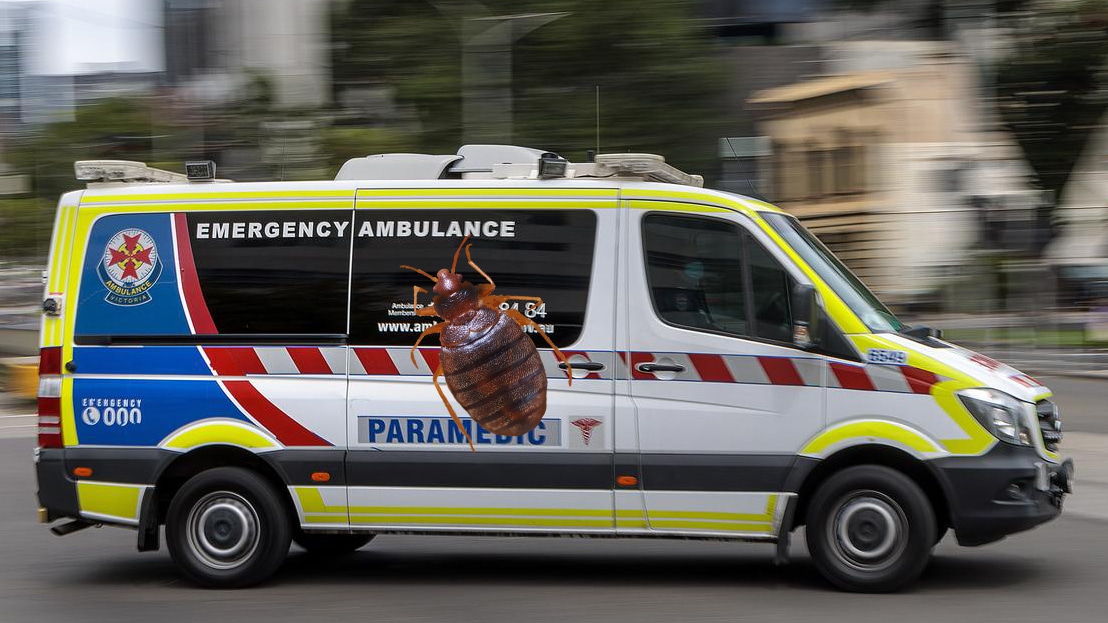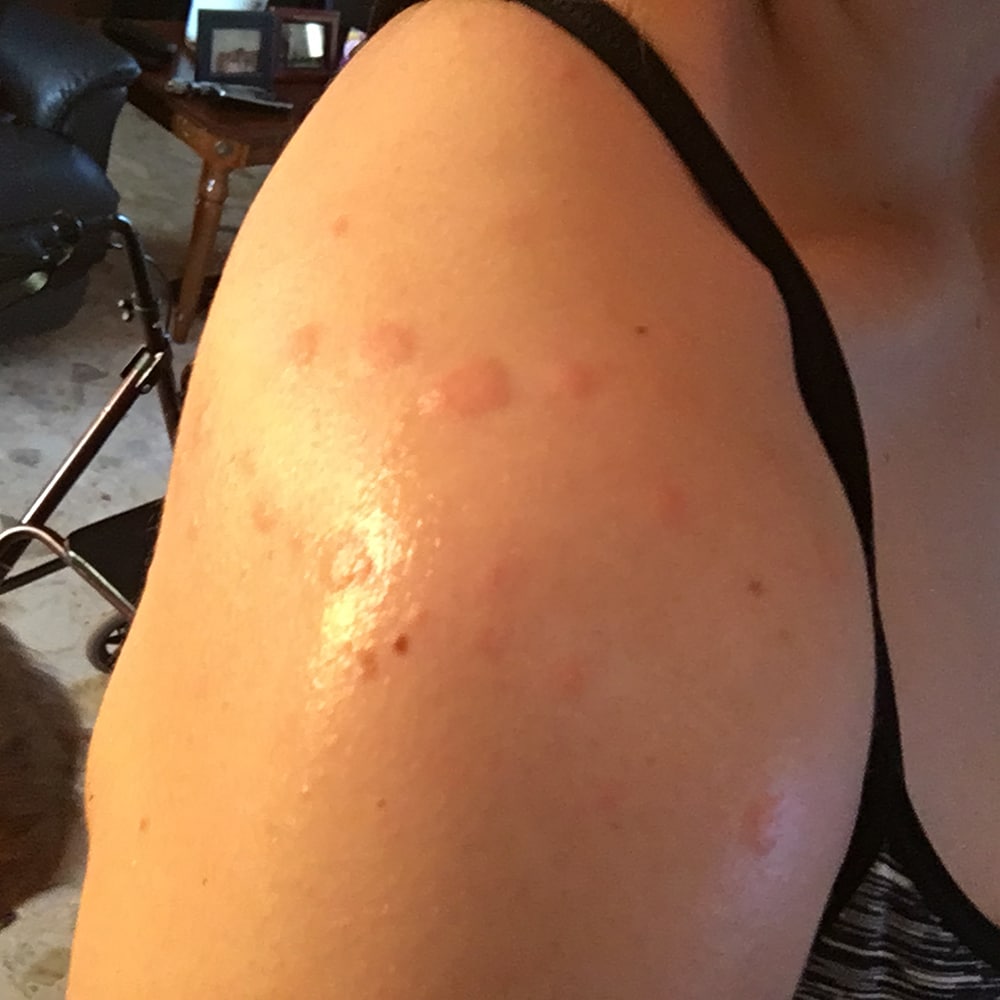
In the article
Risk of Bed Bug Exposure for Patients and Staff
When it comes to bed bugs in ambulances, the biggest worry is the risk of exposure for everyone on board. Picture this: an EMT unknowingly carries a few bed bugs on their uniform from a previous call. They then transfer a patient, and those bed bugs find a new hiding spot—either on the stretcher, medical equipment, or even the patient’s clothing.
Bed bugs are crafty little hitchhikers. They don’t care if you’re in a luxury hotel or a hospital emergency vehicle—they’ll grab any opportunity to find a meal (which is you and your passengers!). With their ability to go unnoticed and the ease with which they hide in the tiniest of cracks, the risk is real.
For patients who are already dealing with health issues, bed bug bites can add an extra layer of stress and anxiety. And for staff members, unknowingly transporting bed bugs to and from work can lead to personal infestations at home. This creates a domino effect, turning a small issue into a larger infestation that spreads like wildfire.
It’s not just about the physical bites—it’s the psychological toll of wondering if you’re bringing bed bugs along with you every time you enter an ambulance. This is why awareness, early detection, and prevention are key to minimizing this risk.

Bed Bugs In Ambulances
Prevention and Detection of Bed Bugs in Ambulances
Preventing bed bugs in ambulances might sound tough, but it’s all about consistency and being proactive. Think of it like doing a routine equipment check—only this time, you’re on the lookout for these bloodsucking hitchhikers.
Here’s what you need to do:
- Inspect regularly: Use a flashlight to search for signs of bed bugs in every nook and cranny. They love to hide in seams, folds, and even inside equipment storage compartments.
- Create a ‘bed bug kit’: Have a dedicated set of tools for bed bug inspection and treatment. Include a magnifying glass, sticky tape (to catch them), and a flashlight.
- Check all bags: Staff bags, patient belongings, and even linens should be inspected for signs of bed bugs. If there’s any doubt, seal them in a plastic bag until you’re sure they’re bug-free.
If you find a single bed bug, assume there could be more. Isolate and treat the area immediately. It’s better to be overly cautious than to risk spreading the problem.
Health Concerns Related to Bed Bug Bites
While bed bugs in ambulances might seem like just an inconvenience, their bites can actually lead to several health concerns.
Here’s the deal:
- Itching and rashes: For most people, bed bug bites cause redness, swelling, and intense itching. Scratching the bites can lead to skin infections, which require medical treatment.
- Allergic reactions: Some individuals can have serious allergic reactions to bed bug bites. This can lead to symptoms like painful swelling, hives, and in extreme cases, anaphylaxis(CDC).
- Secondary infections: The real danger is when someone scratches those bites too much. This can break the skin, leading to open sores that can become infected. Patients with compromised immune systems are especially at risk(CDC).
Medical personnel should always consider these factors when dealing with potential bed bug bites in ambulances and use preventive measures to protect both themselves and their patients.

Bed Bug Bites On Shoulder
Sanitization and Treatment Protocols for Ambulances
Sanitizing an ambulance for bed bugs can feel like trying to find a needle in a haystack. But, a systematic approach can save time and prevent a re-infestation.
Here’s a step-by-step breakdown:
- Vacuum all the suspected areas thoroughly. Pay special attention to seams, fabric folds, and hard-to-reach spots. Use a vacuum with a HEPA filter and dispose of the bag immediately after use.
- Steam cleaning: Bed bugs and their eggs die at high temperatures. Use a steam cleaner to go over the entire vehicle, ensuring you don’t miss any spots. This method kills both bed bugs and their eggs, providing a more thorough solution.
- Seal and isolate: Any items that can’t be vacuumed or steamed should be sealed in plastic bags. For items like fabric or equipment that’s difficult to clean, keep them sealed for a few weeks to ensure no bed bugs survive.
- Use bed bug-specific treatments: Diatomaceous earth (Bed Bug Killer) is a safe, non-toxic option that can be applied to cracks and crevices. It works by dehydrating the bugs over time.
After treatment, conduct regular inspections to ensure the problem doesn’t resurface.
Impact of Bed Bug Infestations on Ambulance Operations
If you’ve got bed bugs in ambulances, it’s not just a creepy inconvenience—it’s a potential operational nightmare. Imagine having to take an entire vehicle out of service for treatment. That means fewer ambulances on the road and delays in response times.
And it doesn’t stop there:
- Patient complaints: No one wants to hear that they picked up bed bugs while being transferred for medical care. It can lead to complaints, damage to your service’s reputation, and even legal action.
- Increased costs: Between treatments, lost service time, and potential lawsuits, bed bugs in ambulances can quickly add up to thousands in expenses.
- Staff morale: No one wants to work in a place that has a bed bug problem. It can cause anxiety, absenteeism, and even staff turnover if the issue isn’t resolved promptly.
That’s why prevention, detection, and swift action are essential to keeping the wheels turning and ensuring everyone—patients and staff alike—feels safe and secure.
Frequently Asked Questions:
- How to Avoid Bed Bugs in EMS?
Regularly inspect the ambulance for bed bugs, focusing on seams, storage areas, and fabric surfaces. Use disposable covers for seats and stretchers and keep personal items in sealed bags. Change uniforms after shifts if bed bugs are suspected to prevent carrying them home. - Can I Call Off Work for Bed Bugs?
Yes, you can. If you suspect bed bugs on your person or at home, inform your supervisor and take steps to prevent spreading them to the workplace. Consider professional treatment before returning to work. - What to Do if a Patient Comes in with Bed Bugs?
Isolate the patient with disposable covers and bag their belongings. After transfer, vacuum and steam clean the vehicle, and alert staff or patients who may have been exposed to take precautions.
Are You Looking for an Organic DIY Treatment?
Watch Our DIY Treatment Video For An Ensemble Bed
Watch Our DIY Treatment Video For A Bed with Slats
If you’ve enjoyed our blog, ‘Bed Bugs in Ambulances,’ then you might like to read our blog, ‘20 Bed Bug Facts.’
Sources:
Tony pioneered a non-toxic, eco-friendly solution for bedbug infestations. His innovation won the ABC TV show “The New Inventors” in 2009. In 2012, he successfully registered Diatomaceous Earth for bedbug control in Australia.



Leave a Reply